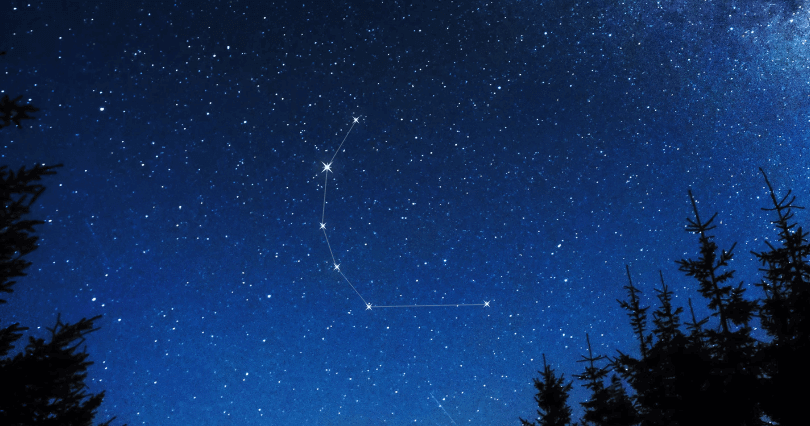Corona Australis constellation

Corona Australis is nowadays recognized by IAU and listed in 88 modern known constellations. Corona Australis is the counterpart to Corona Borealis. Corona Australis is a small inconspicuous constellation located between Sagittarius and Scorpius in the southern hemisphere. Its name is Latin and means “Southern Crown”. Corona Australis is called Southern crown because it represents the crown that was worn by a centaur. The constellation is not linked to any particular myth story.
Greeks didn’t see it as a crown but as a laurel wreath. That story is associated with the Dionysus who was supposed to have placed a wreath of myrtle into the Underworld. That was actually a gift for his dead mother. The small circlet of dim stars this constellation contains has an appearance of a wreath or a crown.
How to see Corona Australis constellation?
Corona Australis is a small faded constellation in the southern hemisphere. It contains no brighter star than magnitude 4. The constellation is located near two Zodiac constellations – Scorpius and Sagittarius, and Altar and Telescopium constellations. This constellation is visible at latitudes between +40° and -90° and is easy to spot at culmination during August.
Major stars in Corona Australis constellation?
Corona Australis consists of 6 stars and is home for 14 stellar members with Bayer/Flamsteed designations. There is one meteor shower associated with it that occurs every year in the month of March.
Corona Australis is 80th constellation in size in the night sky and it is located in the third quadrant of the southern hemisphere. Constellation could be seen at latitudes between +40° and -90°. Nearby are Ara, Sagittarius, Scorpius, and Telescopium constellations.
Corona Australis does not contain any stars brighter than magnitude 3.00 and the brightest one is Alpha Coronae Australis - Alphekka Meridiana.
Corona Australis has two stars with known planets and one of them is called HD 166724. This is actually a K-class dwarf with an orbiting planet that was discovered in 2012 and considered to be one of the 5 most eccentric planets.
Notable deep sky objects in the constellation are: The Corona Australis Nebula and the Coronet Cluster. Corona Australis does not contain any Messier objects, and there is only one known meteor shower associated with it – the Corona Austrinids.
Corona Australis belongs to the Hercules family of constellations, along with Aquila, Ara, Centaurus, Corvus, Crater, Crux, Cygnus, Hercules, Hydra, Lupus, Lyra, Ophiuchus, Sagitta, Scutum, Sextans, Serpens, Triangulum Australe, and Vulpecula.
Mythology of the Corona Australis constellation
Corona Australis or also known as the Southern Crown was first documented by the Greek astronomer Ptolemy in the 2nd century CE. Corona Borealis, that was also in Ptolemy’s list of then-known 48 constellations, is actually the Northern Crown.
In one version of the story is Corona Australis constellation associated with the myth of the God Dionysus. Corona Australis is here shown as the crown that Dionys’ placed in the sky after freeing his mother Semele from Hades. In another, Corona was known as a wreath and not as a crown.
Long before Ptolemy’s list of constellations was created, The Corona Australis Constellation was known as a circlet of stars near Centaur’s forefeet and was represented by Zodiac constellation Sagittarius. 13 stars were originally added to this constellation by Ptolemy, but later one was one of them moved to Telescopium and shortly became its Alpha star.
Choose your package
-
Lifetime Entry in Star Catalog
-
Guaranteed visible from your location
-
Star Finder app access


-
Free & express shipping available
-
PDF Emailed in Seconds
-
Everything from a Standard Star package
-
Choose a Star Constellation
-
Easier to find in the Sky




-
Free & express shipping available
-
PDF Emailed in Seconds
-
Everything from a Standard Star package
-
Name Two Stars together
-
Extra bright and Unique 2-Star Pair






-
Free & express shipping available
-
PDF Emailed in Seconds



